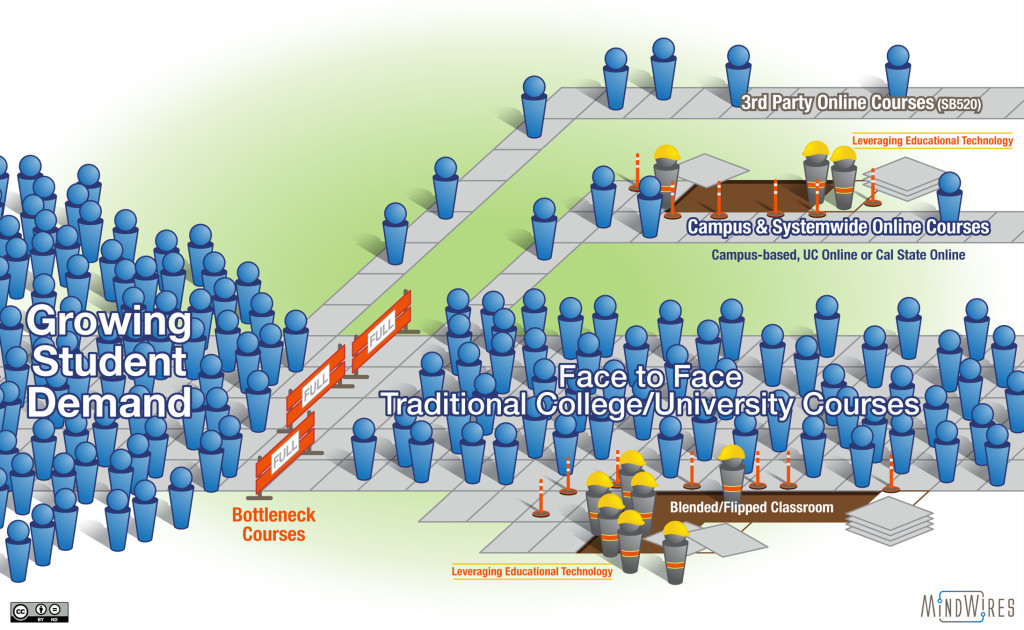We are pleased to announce the publication of our white paper on California’s bottleneck course issue. Many thanks to the paper’s sponsor, the 20 Million Minds Foundation, for giving us the support and freedom to write exactly what we believe. If there is anything that you find wrong or objectionable in the paper, then blame us.
The central idea in the paper is that California should adopt the principle that students have a right to educational access. There is a fundamental difference between saying that we should do whatever we can to give students access and saying that we have an obligation to enable students to exercise their right to access. And that change of frame is critical to solving the problem of bottleneck courses.
The current incarnation of SB 520, which we have written about here repeatedly, has been accused by its detractors as being a potential vehicle for gutting and privatizing California’s public higher education. We believe that concern is legitimate. However, in the context of a larger bill supporting the students’ right to access, it could be not only positive but essential as path of last resort. As part of supporting every citizen’s right to due process when accused of a crime, the government is required to provide access to a public defender. But few people who have financial means are likely to choose a public defender over a private attorney because private attorneys, by and large, have access to resources (including time for individual attention) that public defenders do not. Likewise, we believe that access to third-party online courses disconnected from a student’s home institution is a poor solution to the student’s access problem. The only worse solution is not to have one at all, which is the current situation. If Californians believe that students should have a right to access, then they must provide a means of last resort for students to exercise that right.
But the best solution would be to eliminate bottleneck courses altogether, which is why much of our proposal centers on providing mechanisms and funding to empower faculty members, campuses, and systems to solve these problems within the California public education system, where students have the benefit of the campus support network and expertise of local faculty. Even the main funding for the third-party course provisions, which we characterize as the “safety valve” of the plan, would go toward developing infrastructure that would be equally useful to support students taking courses from other campuses within the California systems. If the faculty and administrators will lead an effort to solve the bottleneck course problem organically, with appropriate support from the state, then the actual use of the safety valve option by students could become a rarity.
We acknowledge that technology is not the only possible solution to the bottleneck course problem; nor do we assume that the underlying budget challenges should be accepted at face value. We have written about technology as one avenue to solve the problem because educational technology is what we know about and what we were asked to write about. None of what we suggest precludes discussions about allocation of funding in college budgets, levels of state funding support, allocation of faculty time to lower-division courses, or other relevant questions.
We believe strongly that students should have a right to educational access and that technology can be one useful tool in enabling them to exercise that right. We also believe that the educators in California’s public college and university system are still critical enablers of that right and have a central role to play in making that ideal a reality. And we think there is real value in bringing together educators across the state to focus on sensible application of technology to solve a real educational problem. The culture and collaboration, knowledge and infrastructure that could be created to solve the access problem could also be applied to problems such as improving completion rates, improving course quality, and lowering tuition costs.
You can read the white paper here.

[…] and I have written about California’s efforts to leverage online education to address the challenge of […]